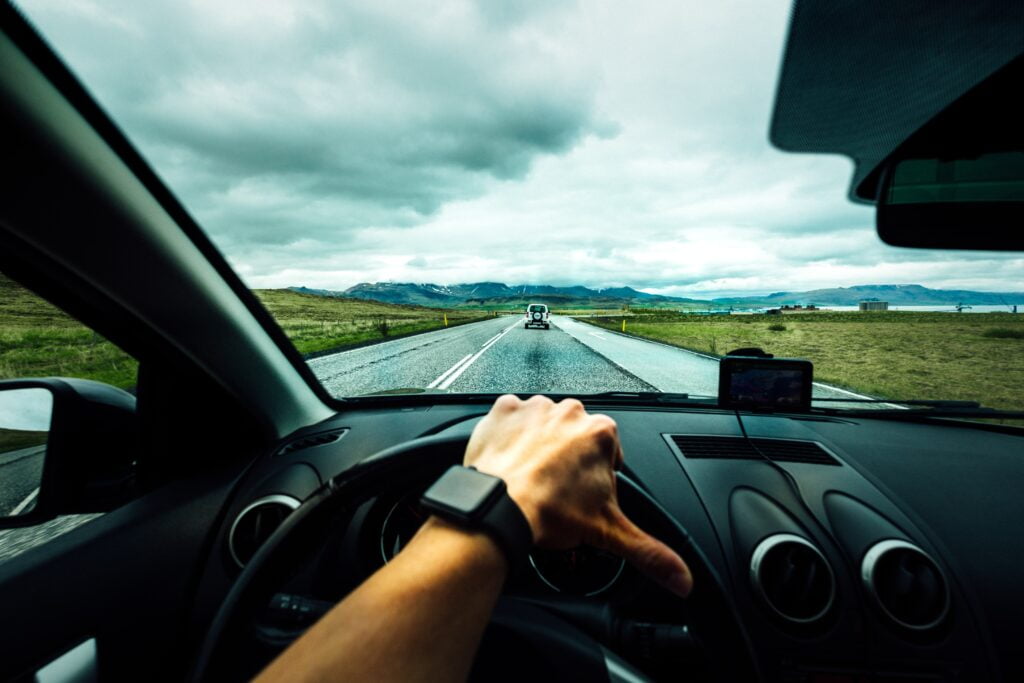Understanding the extensive regulations, restrictions, and legal nuances surrounding driving represents a perennial challenge for motorists. Even experienced drivers can find themselves uncertain on finer points of laws covering common road scenarios or vehicle issues. Yet comprehending the standards and procedures shaping UK motoring laws proves crucial for avoiding penalties and protecting one’s rights after incidents.

This guide addresses five of the most frequently raised questions by drivers about navigating the complex legal landscape on British roads and handling related disputes or claims. Below the summarised queries, you will find thorough explanations from the perspective of legal experts alongside actionable guidance for keeping compliant as laws evolve. Whether discussing updated mobile penalties, parking violations, accident liability or common driver disputes, find plain English interpretations below with insights to empower all road users.
The 5 Most Common UK Motoring Law Questions
- What are the current fines and penalty points for being caught using a mobile while driving in the UK?
- Are dash cam videos submitted by the public now admissible for issuing parking fines?
- How is legal responsibility decided for accidents involving autonomous or self-driving vehicles?
- Can insurance companies legally withdraw coverage after a collision claim is filed?
- What essential information should I gather at any accident scene to support a future claim or defence?
Now let’s explore detailed answers and advice for each question from transport law specialists who can further advise in case of incidents.
Q1: Fines and Penalty Points for Using a Mobile While Driving

In an effort to curb dangerous distracted driving, laws prohibiting motorists from using hand-held mobile phones or similar devices while operating vehicles saw significant increases to fines and penalty points as of 2023. We summarise the current scale of sanctions below before analysing some outlier cases like stationary use.
Current Base Fixed Penalty Notices
The core penalties now in place mandate that any driver caught by police:
- Making phone calls while driving faces a £200 fixed penalty notice and six penalty points applied to their licence
- Texting, taking photos or videos, scrolling social feeds or accessing internet faces a £200 fixed penalty and six points – even when temporarily stopped in traffic or at lights
- Unlawful hand-held device usage by new drivers under two years results in six points and £200 fine, triggering licence revocation
The above sanctions represent the standard base penalties, though some aggravating factors explored later may enhance fines up to £1000. Critically, accruing 12+ points within three years leads to a minimum six month driving ban under ‘totting up’ rules. So even single instance mobile infringements place motorists at serious risk now.
What About When Parked or Stopped?
We have received many queries around whether brief device usage remains permitted when safely pulled over or parked legally off road. The current guidance remains somewhat ambiguous and subject to officers’ interpretation of “driving”.
In principle there is no exemption for stopped use, as any device interaction could still undermine hazard awareness or prompt unsafe manoeuvres pulling away. Strictly, motorists should only operate integrated in-vehicle systems at rest, or else exit vehicles altogether before using hand-held devices if urgent.
Of course, officers maintain reasonable discretion powers and prioritise obvious public endangerment over technicalities. But road users should not rely on assumed leeway for rest-stop mobile use given blurred lines. Turn the vehicle fully off and ideally exit it before relying on your phone to avoid penalty risks.
Aggravating Factors Enhancing Fines

While the penalties listed earlier represent the conventional sanctions, prosecutors and sentencing magistrates in egregious cases of dangerous driving may seek additional sanctions like:
- Driving offence fine increases – Serious cases jeopardising vulnerable road users can prompt judges to apply fines exceeding the standard fixed amounts up to a £1000 maximum
- High risk traffic bans – Similarly, sentences might include temporary bans prohibiting driving motorised vehicles or other measures aimed at preventing repeat offending
Documentation substantiating such court ordered enhancements usually involves evidence like excessive speed violations or distraction-linked accidents and collisions contemporaneous with device usage.
Ultimately most police encounters lead only to standard penalties rather than court summons – but understanding the worst case outcomes underscores the modern harder line against drivers diverting attention from operating vehicles safely. Maintaining strict compliance with tightened mobile usage laws aids all road users by deterring dangerous behaviour.
Q2: Are Dashcam Submissions Now Admissible for Parking Fines?
Dashcams and video recording devices integrated with vehicles or supplemented via occupants’ smartphones continue growing exponentially in popularity given declining costs. And their capabilities for capturing road incidents first-hand understandably appeals to both public safety advocates and dispute claimants.
Recently, guidance changes even enable submitting such video evidence in connection with parking violations and penalties – a trend we unpack below:
New Powers to Submit Digital Evidence
Whereas previously penalties relied predominantly on physical tickets being applied on wrongly parked vehicles, expanding video submission powers allow:
- Members of the public to conveniently report infringements like pavement parking via apps
- Local authorities to corroborate claims using location-tagged, time stamped footage
- Streamlined digital video processing reducing resource burdens otherwise necessitating in-person inspections
Adopting dashcam or smartphone recordings within enforcement workflows will facilitate clamping down on unsafe pavement parking more widely. Approaches pioneered in London borough trials are now being standardised across most jurisdictions.
What Evidence Do Images Require to Secure Fines?
Of course, introducing citizen reporting alone risks insufficient oversight or false/vexatious claims. As such submitted evidence undergoes vetting procedures appraising essentials like:
- Clear identification of vehicle make, model, colour and if possible, license plate details
- Visible tire-to-kerb distance confirming obstruction of pavements, crossings or cycle paths
- Matching location data affirming positioning contravenes parking rules
Where uploaded media satisfies inspectors on these evidentiary criteria, penalty charge notices may be issued by post. Note that while dashcam or smartphone videos prove very useful for reporting parking infringements, they still require careful review before authorities issue fines – with potential challenges remaining options as well.
Q3: Liability Decisions on Self-Driving Vehicle Accidents

Advanced driver assistance capabilities rapidly expanding even on models from affordable brands illustrate vehicle automation permeating mainstream transport – a trend poised to transform road risks and crash liabilities. Questions abound regarding accountability amidst gradual adoption.
Who Takes Blame for Crashes: Human or Automated Driver?
Broadly, collision responsibility with assisted/automated driving depends whether human override was possible and overrides are themselves lawful. For instance:
- If an engaged self-driving system alone controlled decisions and movements where permitted, the vehicle assumes accountability – shifting responsibility to manufacturers and insurers over drivers
- But amid *human driving with ignored system alerts*, standard liability principles apply, with insurance raising provable recklessness or negligence actions against motorists
Degrees of grey area persist given varied autonomy across models and contexts, necessitating detailed incident forensics. Civil claims and criminal charges often follow separate paths as well.
Insurers expect a transitionary period seeing fault disputes and litigation stress testing accountability boundaries for semi-autonomous/automated systems. They recommend at least maintaining conventional comprehensive policies at this stage as new legal precedents emerge. Recording driving mode choices and retaining related telematics data aids resolving collision debates too.
Are Manufacturers and Dealers Also Exposed by Autonomy Releases?
Expanding autonomy does expose automakers and supply chain partners to liabilities as well where compromised software or sensors manifest in crashes. Class actions alleging rushed testing or misleading marketing around support system limits target the deep pockets of manufacturers.
But agreement ahead of market release on reasonable capabilities can protect brands embracing transparency. Independent standards endorsements offer another building block ensuring buyer alignment on limitations. Dealers meanwhile help educate buyers on the analysed strengths and weaknesses of driver technologies across models relative to individual needs and constraints.
With cooperation, increased driving automation promises profound safety enhancements. Yet the transition remains very much a shared journey for shapers and users alike demanding continuous collaboration.
Q4: Can Car Insurance Coverage Be Withdrawn After a Collision Claim?

Insurers cannot freely cancel premium collision damage policies or third party liability protections upon submission of a claim – at least during the existing coverage term based on binding principles. We clarify the narrow qualifying scenarios where providers might justifiably cancel policies early below.
Breaking Critical Policy Conditions
Generally only clear claimant violations of core policy requirements potentially allow early withdrawal, chiefly:
- Failing to quickly report major accident damage as obligated
- Withholding pertinent claim details or submitting fraudulent repairs data
- Failing to cooperate with damage/injury liability investigations
In such cases directly undermining policy delivery through dishonest actions, an insurer can argue voiding of protections following reasonable written notice.
Outside situations of clear claimant sabotage however, providers cannot arbitrarily abandon customers mid policy term following accidents. Even dramatically increased risk categories only empower proportionately amending future renewal premiums. Of course, policies themselves see adjustments annually.
What Might Justify Fair Mid Term Cancellations?
There are also select extraordinary cases where external events critically undermine insurers’ ability to maintain coverage as intended. For example:
- Sudden extensive licence revocations due to points bans from repeat major speeding offences or drink driving charges
- Policyholders relocating abroad long term – significantly impacting risk exposures
Via written communication citing inability to continue cover given the impacted nature of agreements, insurers may justifiably reduce obligations in these special situations. But never as simple retaliation for filing legitimate collision claims.
As with any contract, motoring insurance policies ultimately rely on reasonable claimant actions enabling underwriters to fulfil protections stated upfront. Breaching this balance permits narrowly defined cancellation rights, while standard claims trigger only premium increases.
Q5: Essential Post Accident Information to Capture
The moments following motor collisions represent high stress episodes where overlooking critical incident capture can severely undermine injury claims or financial recovery later. Having a standard checklist helps motorists confidently record essential details straightaway both for insurers and personal records if required in disputes.
Core Information Categories to Note After Any Accident
To optimise documenting the incident once immediate health and safety checks finish, take stock of:
Category A) – Third Party Identification & Vehicle Checks
- Registration numbers and makes/models of involved vehicles
- Other motorist particulars like phone, insurance, name
- Photos capturing damage, debris, skids plus wides shots affirming conditions
Category B) – Wider Scene Evidence
- Visible road defects like potholes contributing (take photos)
- Weather specifics including estimates of speed, water/ice
- Road layout factors like signs, visibility impediments
Category C) – Police Response Handling
- Obtain incident reference number and attending officer details
- Note which parties receive liability indications on scene (and cautions or fines if applicable)
- Request a copy of formal police accident report once completed
While perhaps seeming superficial amidst shock or frustration, dedicating focus to gathering such information pays dividends for securing your rights. That means having camera phones or notepads always at hand within vehicles via prepared accident kits.
Why Act Quickly to Capture Post Incident Scene Details?
You may rightly wonder, why the urgency to record such exhaustive information yourself when insurers, authorities and legal representatives access extensive investigation capabilities? Surely images and forensics specialists will identify contributory issues anyway?
A key reason lies in litigation reality checks – independent teams build cases toward their employer clients’ interests, not determinatively yours. By collecting your own contemporaneous incident data immediately afterwards, you rebalance scales against parties seeking limiting liabilities. The golden window for collecting often unique evidence like skid marks, debris, unrelated car damage or weather induced hazards can close very quickly too.
Take control via thorough documentation giving your legal team an informational foundation to reconcile against later opposing claims and reports. Robust early evidence gathering defensive driving behaviours learned before an accident equips you to protect innate post collision rights.
Conclusion – Empowering Drivers With Legal Knowledge
Remember, bolstering basic understanding around vehicle ownership laws, motoring penalties, insurance principles and post accident actions better equips drivers to exercise road rights responsibly while defending entitlements when incidents require asserting claims or defending charges. Expert motoring solicitors can of course provide more tailored guidance amidst personal cases.
We hope this guide tackling some of the most frequently posed UK road user queries assists everyday motorists in engaging safely and knowledgeably with evolving motoring laws and protocols. While the summaries above outline current standards in each area, keeping up to date across news or professional legal blogs remains important given shifting rules and precedents.


